Few drivers are having as great a year as Tony Kanaan, who drove the #11 car to victory at the Indy 500 over Memorial Day weekend. He also placed third in the Firestone 550 and is fourth in the overall Indy Series points standing.
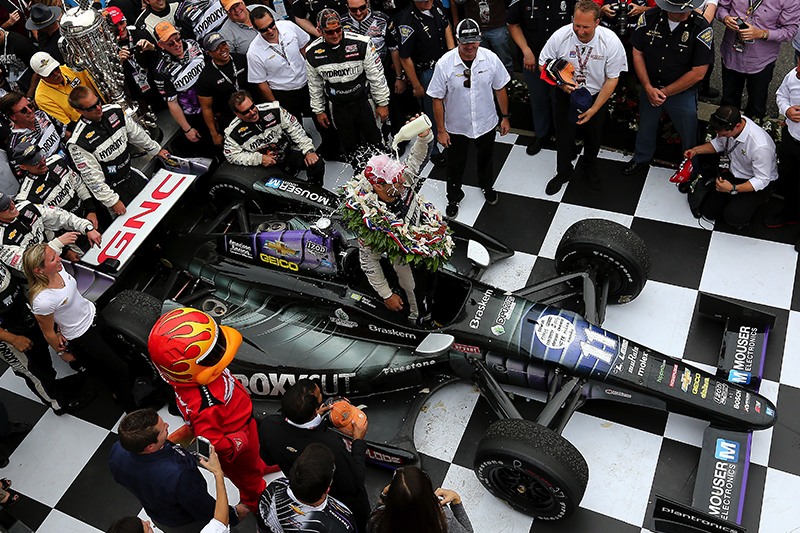
During the Firestone 550, held at Texas Motor Speedway, some folks from Mouser paid a visit to the KV Racing team to talk in-depth about how electronics play a part in their on-going success. The Mouser car is sponsored by a whole host of electronics companies, many of which have a high stake in the game, as their parts play an active role in the car’s operation before, during, and after each race.
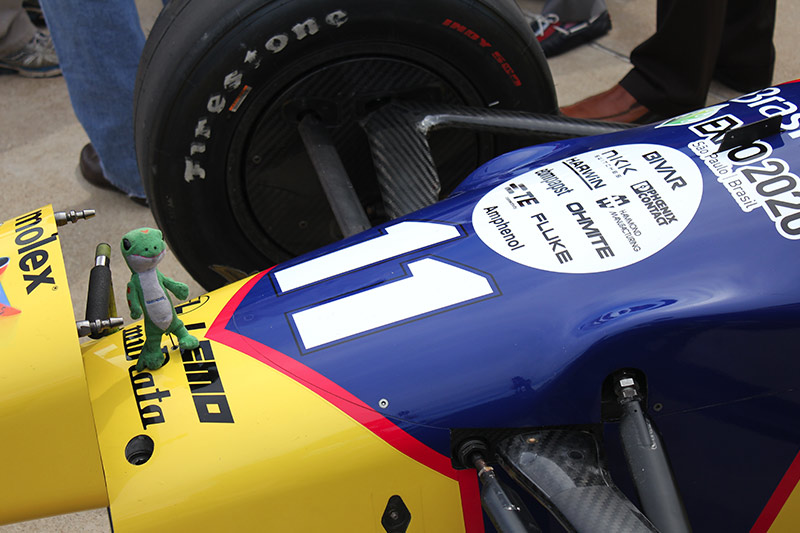
Though many race fans may not realize it, an awful lot of electronics go into the process that results in a successful racecar and a winning race team. Members of Mouser’s technical team talked to the Data Acquisition Engineers for KV Racing, Josh Fults and Matt Cummings, and asked them to dish on just exactly what electronic ingredients they combine to produce such victorious results! Here is just a taste of what they discovered…
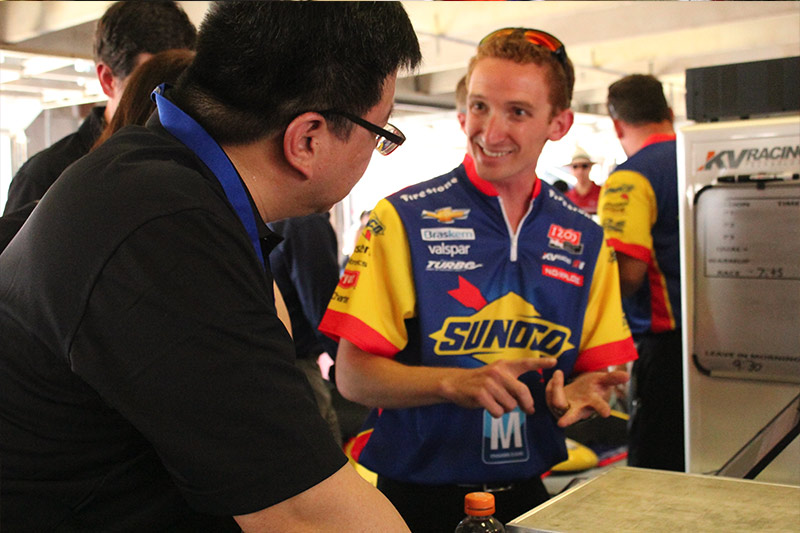
- A large portion of the weight in an Indy racecar comes, oddly enough, from the electronics. The racecar engineers are always on the lookout for smaller and lighter electronics to produce a faster car. As technology advances, electronics are becoming infinitely more compact and more integrated, which lets the race team reduce the weight of the car a bit more each time they update!
- Automobiles—especially racecars—require high endurance under some pretty harsh conditions in order to function properly. When you’re driving down the road, your car may feel fairly smooth and gentle, but that’s because the suspension evens out most bumps and imperfections in the pavement that you would otherwise notice.
However, racecars are built quite differently. In order to get the sleekest, fastest performance out of a racecar, the components have to be a lot more rigid, which can make for a pretty intense, bumpy ride. Though the harness and other elements make the ride easier for the driver, all of the parts that go into a car have to be quite rugged. - One of the ways that the team engineers can determine if components are operating at optimal functionality is by the use of sensors. There are over 80 sensors used to monitor the operation of the Mouser car, including temperature sensors, pressure sensors, flow sensors, and accelerometers, to name a few. But even before these sensors can be used on the car, the engineers have to be sure that they will be working properly during the race.
For that the team uses a specially designed test box, which they built themselves, that allows them to troubleshoot and calibrate sensors and replace any that do not give accurate readings. To test the sensors, the engineers put together numerous components, incorporating them into circuits they designed, and enclosed them in the test box. The box includes parts like Murata LED panel meters, NKK switches, and more. Some other various test boxes created by the team have been made with surprisingly small Hammond enclosures. Other test equipment the team uses includes the very hardy Fluke temperature probes and multimeters.
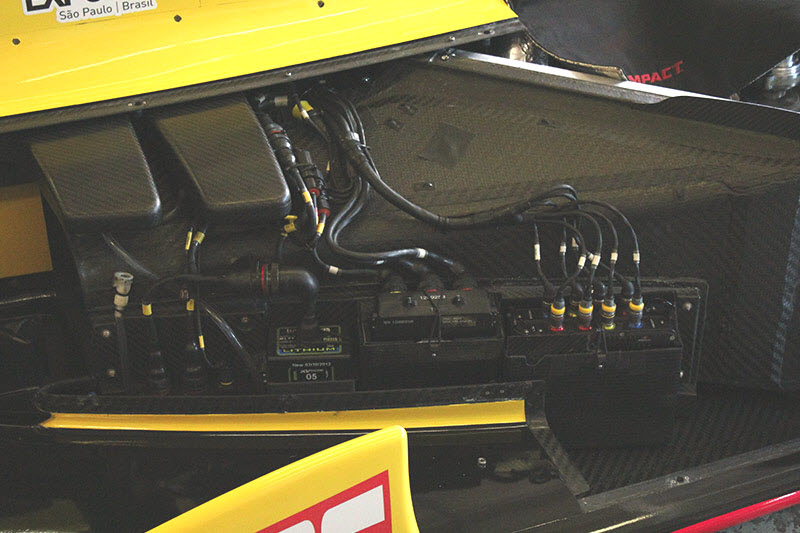
Electronics can be rather fragile, but only the sturdiest options can be selected for use in racecars. Some of the parts used in the Mouser car and other equipment include Harwin crimp connections, which are able to endure extreme vibration and high temperatures. Another sponsor’s parts, Amphenol sealed network connectors, also have high endurance capabilities and are used during testing.
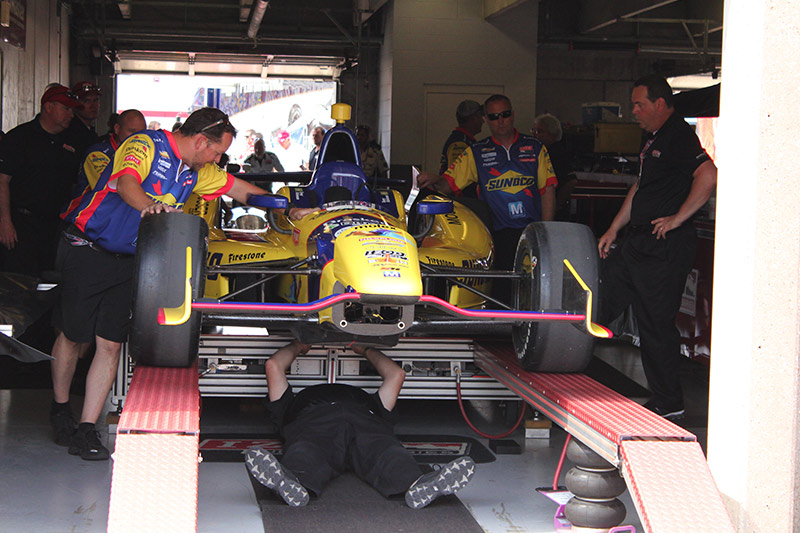
From just this information alone, you can see that we learned a lot about how KV Racing uses electronics. But wait—there is so much more! Tune into our next blog post to discover the rest of what we learned during our interviews with Mouser’s Indy race team!
 Suzanna Brooks joined Mouser Electronics in 2011 as a Technical Content Specialist and writes web content about the newest embedded and optoelectronic products available. Suzanna holds a Bachelor of Science degree from Embry-Riddle Aeronautical University and is a private pilot.
Suzanna Brooks joined Mouser Electronics in 2011 as a Technical Content Specialist and writes web content about the newest embedded and optoelectronic products available. Suzanna holds a Bachelor of Science degree from Embry-Riddle Aeronautical University and is a private pilot.
Advertisement





